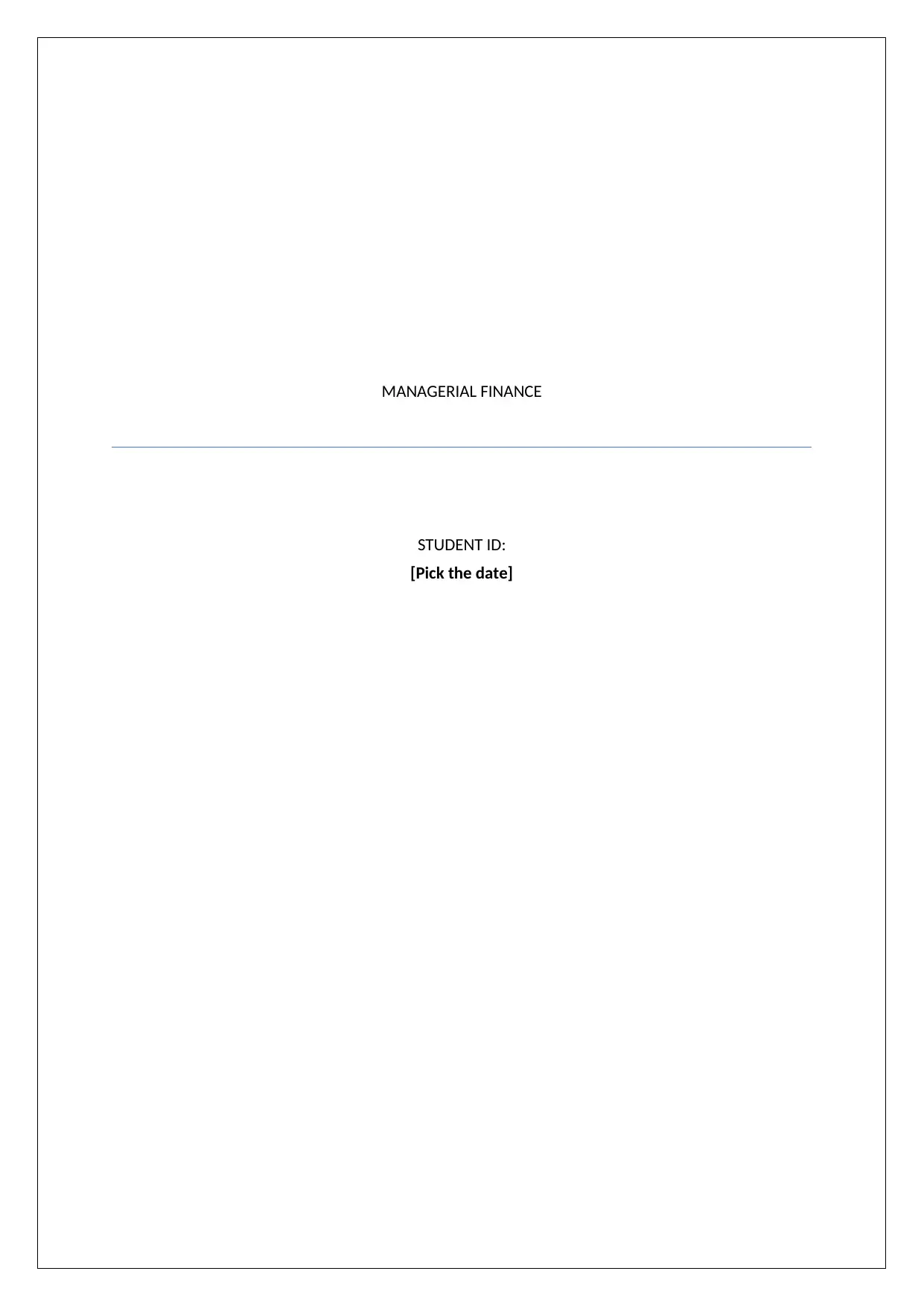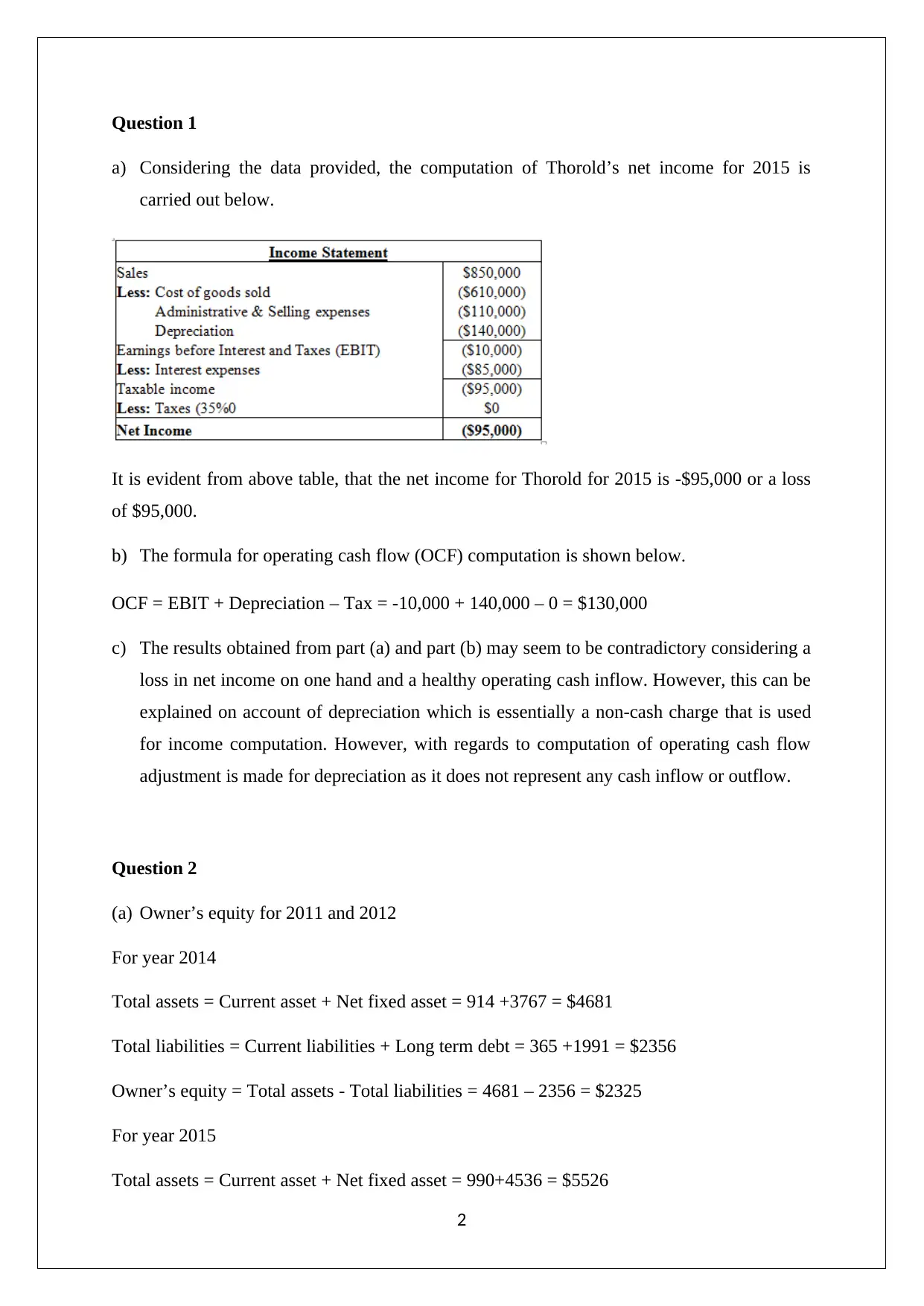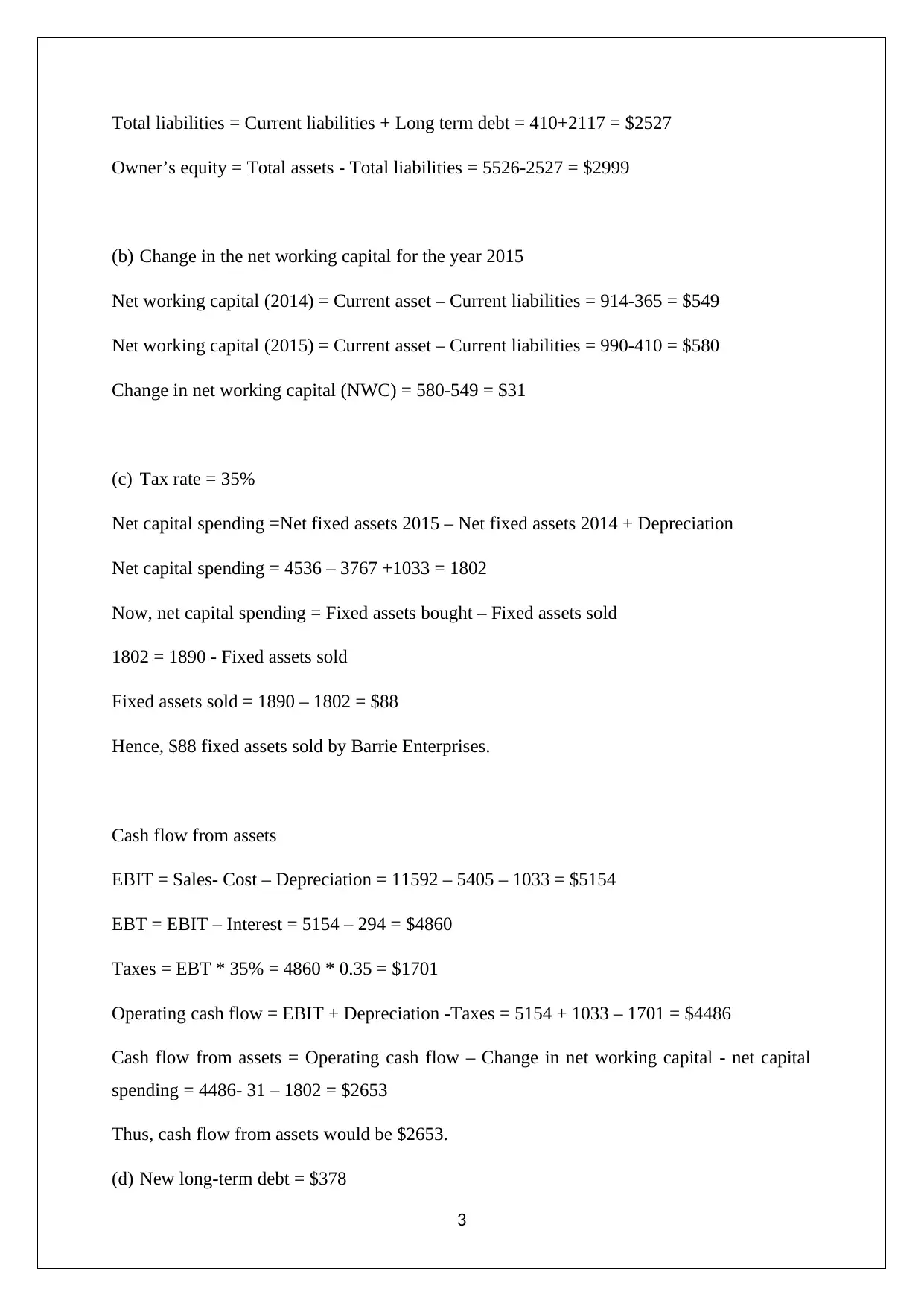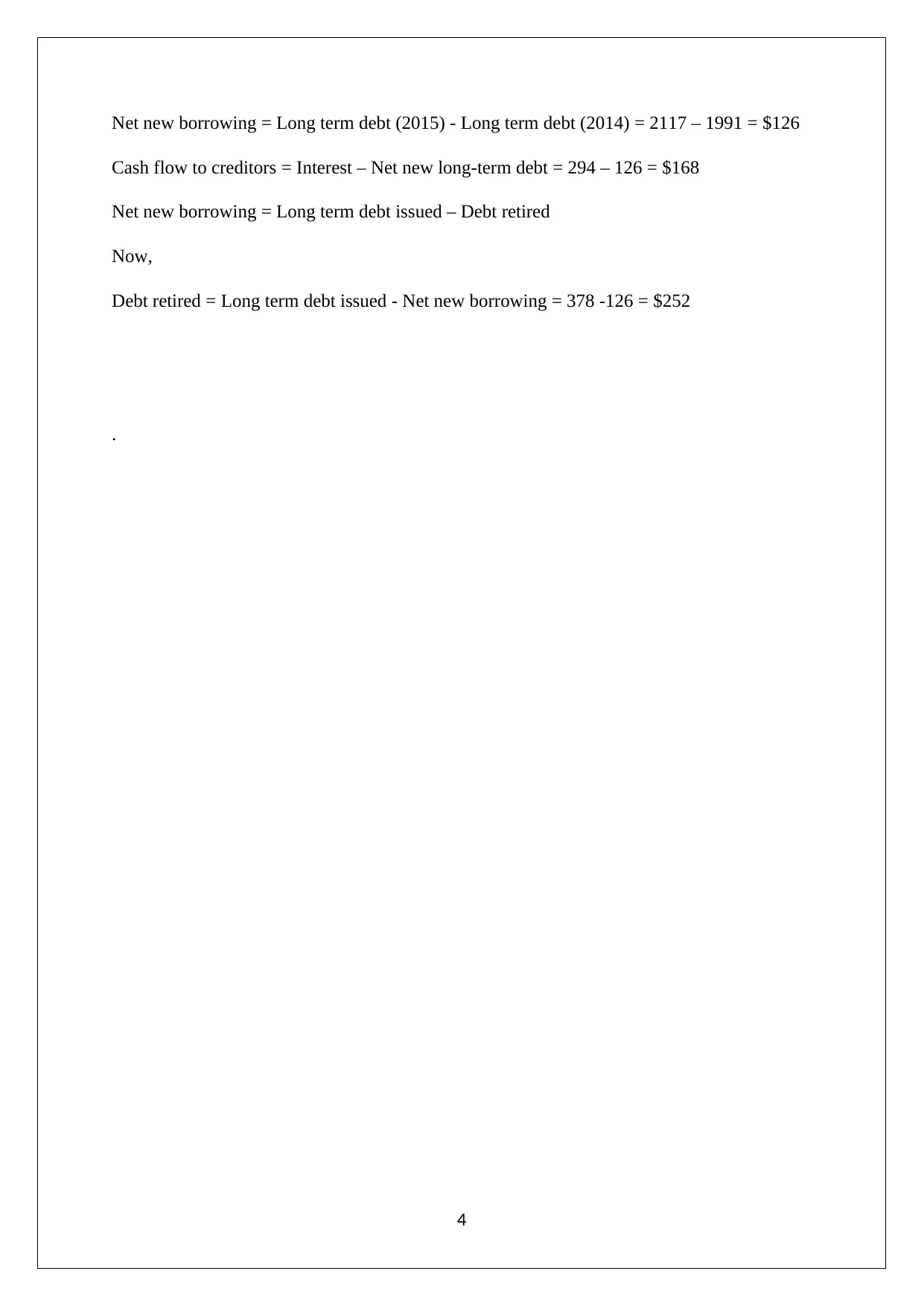Managerial Finance Assignment: Cash Flow and Financial Statements
VerifiedAdded on 2023/01/20
|4
|602
|35
Homework Assignment
AI Summary
This document presents a detailed solution to a Managerial Finance assignment. The solution begins with the calculation of Thorold Umbrella Corp.'s net income and operating cash flow for 2015, considering sales, costs, depreciation, interest, and tax rates. It then moves on to analyze Barrie Enterprises' financial statements for 2014 and 2015, calculating owner's equity, changes in net working capital, and the value of fixed assets sold. Finally, it computes the cash flow from assets, cash flow to creditors, and new borrowing, providing a comprehensive analysis of the company's financial performance and cash flow dynamics. The assignment showcases key concepts in financial analysis and statement interpretation.
1 out of 4











![[object Object]](/_next/static/media/star-bottom.7253800d.svg)